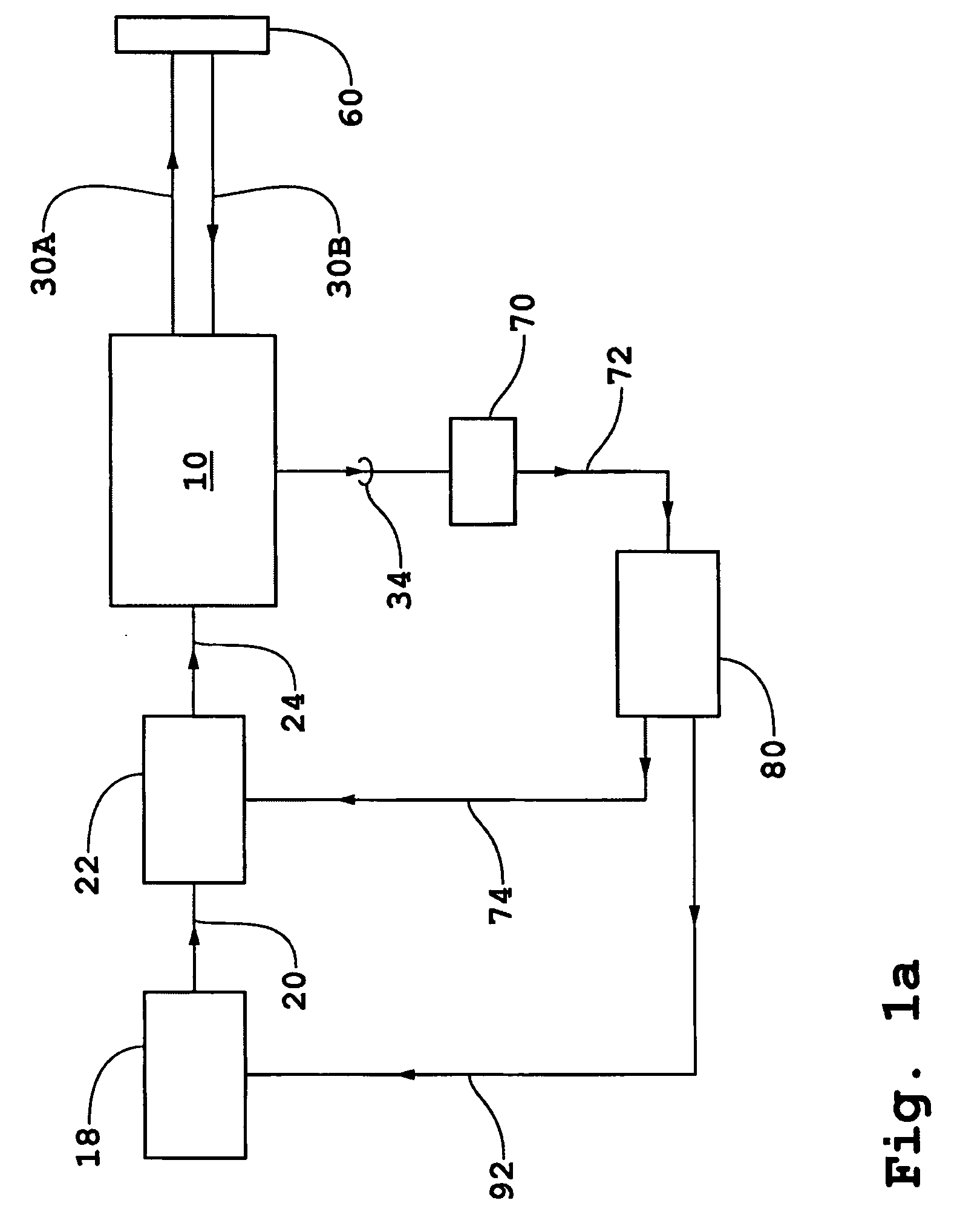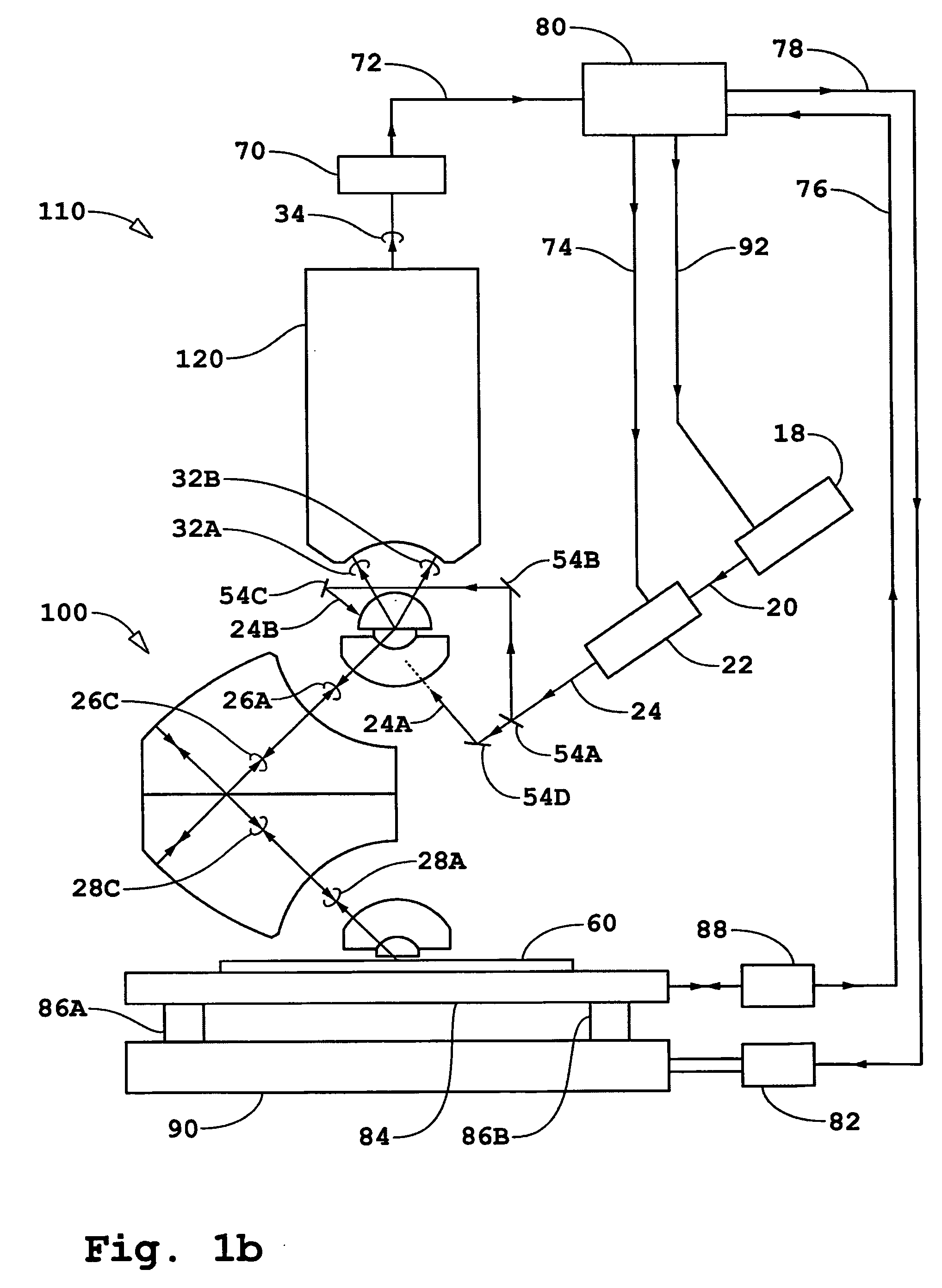Although this has worked well, there are several issues as the industry moves toward implementing deep nanometer process levels with for example image
overlay tools, measurement of CDs, determination of the location of the PO optic axis, and monitoring the PO aberrations.
With respect to
overlay metrology, one of these issues has to do with the traditionally used BiB structures which tend to have large geometries and typically consist of bars microns in size that do not correspond to circuit feature sizes.
As increasingly smaller features are being produced, it has become apparent that the behavior of these traditional BiB targets does not accurately reflect that of the circuit features themselves.
Now, smaller geometries are resulting in accuracy issues that must be addressed in imaging
overlay tools, in particular the tool-induced shift (TIS).
Imaging overlay makes it difficult to reduce TIS because it is critically dependent upon residual aberrations in the imaging overlay
optics with the most critical one being the
microscope objective.
Strehl ratios as high as 0.9 often do not provide the TIS performance required for advanced design rules.
Thus, the technology faces not only optical problems but the fact that traditional overlay marks do not represent the actual behavior of circuit features that are orders of magnitude smaller.
Typically, the allowable overlay error is ⅓ of the CD in the IC device.
Alignment issue is more severe in a back-end process partly due to the influence of CMP, which contributes to the asymmetric deformation or total destruction of the alignment marks.
However, reduced physical size of alignment marks and of overlay patterns used in overlay
metrology reduces the magnitude of the diffracted signals detected in determination of alignment marks and overlay errors, respectively.
The problems that arise in an optical measurement of a CD can also include those introduced by TIS and WIS.
Defects of different types can affect the performance of overlay and CD
metrology systems.
Relative vibration would blur the image and degrade the performance.
This is a difficult requirement to meet for overlay metrology systems that are integrated into a process tool.
Both of these two requirements are progressively becoming more difficult to meet in
lithography tools and in particular progressively more difficult to meet during the
exposure cycle of a
wafer as the sizes of technology nodes and concomitantly the exposure
wavelength of the
lithography tools decrease to meet the continuing demand for higher performance of
semiconductor products.
At such small length scales, the image does not have well determined edges because of
diffraction.
The
asymmetry in target changes the
diffraction pattern, thus potentially causing an overlay measurement error.
A limitation of U.S. Pat. No. 4,757,207 is that spatial variations in the film thickness that are caused by CMP and
resist loss during
lithography will cause erroneous overlay measurements.
Another limitation of U.S. Pat. No. 4,757,207 is that reflectance is measured at eight sites in one overlay metrology target, which increases the size of the target and decreases the
throughput of the measurement.
Another limitation of U.S. Pat. No. 4,757,207 is that the lines and spaces need to be large compared to the
wavelength, but small compared to the measurement spot which limits the
accuracy and precision of the measurement.
The dependence of the optical properties of the sample is not measured as a function of
wavelength, or
angle of incidence, or polarization, which limits the precision of the measurement.
They do not teach how to obtain the quantitative value of the offset from the
light intensity measurements.
The direct application of Maxwell's equations to diffracting structures, in contrast to non-diffracting structures (e.g., unpatterned films), is much more complex and time-consuming, possibly resulting in either a considerable time
delay between
data acquisition and result reporting and / or the need to use a
physical model of the profile which is very simple and possibly neglects significant features.
However, the approximations inherent in the simplified model make it inadequate for
grating structures that have period and
line width dimensions comparable to or smaller than the illumination wavelengths.
OCDR of prior art yields accurate information about the height profile of a surface but does not yield corresponding accurate information about the transverse location of features on a patterned
wafer.
 Login to View More
Login to View More  Login to View More
Login to View More 


